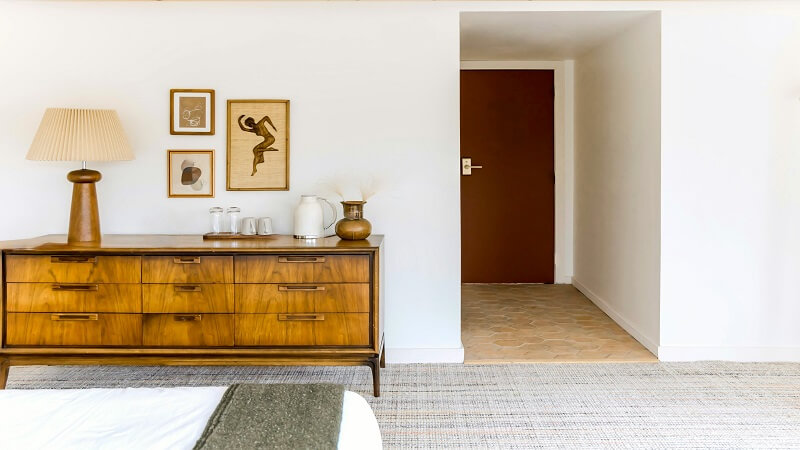Artwork creation is usually initiated as a relaxing activity, hobby activity, calming the mind, and adding stories and emotions to paint. Amateur artists simply appreciate the relaxing gratification of finishing canvases to place in closet space shelves, drawers, or garage walls. The paintings might be more valuable than a hobby. They have the ability to give personality and character to a home, to make every space more functional and welcoming. Instead of art just sitting and gathering dust on the shelf, it can be hung proudly on the wall, a room with the feel of function and presence. If the work of art is an imaginary piece, a still life, or an imaginative work done with children, they are all worthwhile. With imagination and some planning in advance, these early works can be a part of the basic elements of home space, fusing individual design and functional decor.
Choosing the Perfect Paintings for Every Room
Having an idea of what will succeed in every room beforehand makes a home feel more together and intentional. Artwork can be used to do more than just fill up bare walls; it can change the ambiance of a room and how it is lived in. Choosing the right artwork isn’t about matching color. Find out here how to thoughtfully select art that suits your space and brings your rooms to life. There is no playbook to work from, but there are likely general principles that can guide decisions and help paintings be incorporated into the room, not a consolation. Discover here what kind of rooms are improved by which styles, color, and grouping of paintings.
Match Mood with Color
- Living room: This shared space welcomes warmth, balance, and conversation. Try medium to large paintings in warm tones or soft neutrals to create ease.
- Bedroom: A restful environment benefits from calm, soft hues. Paintings in blue, gray, or muted pastels can promote peace.
- Kitchen and dining: Bright and joyful tones like citrus, yellow, or leafy green bring energy. Paintings of food, nature, or abstract shapes work well here.
Pay Attention to Scale
- Large canvases can anchor wide, open walls in living rooms or bedrooms.
- Smaller works can group together as a gallery wall in narrow hallways or over consoles.
- Miniatures may add subtle flair to shelves, nooks, or counters.
Thematic Harmony
- Abstract pieces pair well with modern furnishings.
- Natural scenes and florals fit well in cozier, traditional, or rustic interiors.
- Kid-friendly themes add charm to playrooms or bedrooms.
Framing, Displaying, and Styling Your Art
The second part of selecting the right pieces is then to display them with purpose. How a piece of work is mounted or framed will dictate how it is viewed. Wise display not only brings attention to the object but makes it even more in harmony with the rest of the design. Whether informal or formal means of presentation, a selected mode of presentation imbues meaning to the art. Having home-made artwork displayed is not attempting to replicate a gallery, but not attempting to figure out how the work will become a part of the room without depreciating in value by being similar.
Low-Cost and Comfortable Framing Options
- Use secondhand or thrift-store frames and refresh them with a coat of paint.
- Try floating frames for a clean, modern presentation.
- Wooden frames with simple, unpolished finishes can suit both rustic and contemporary styles.
Creative Display Ideas
- Gallery Walls: Mix personal paintings with prints, photos, or mirrors for an eclectic arrangement.
- Easels: Use tabletop easels for art on shelves, dressers, or entryway tables.
- Clip Hanging: String twine across a wall and hang art with clips for a casual, changeable display.
Placement Tips for Everyday Spaces
- Entryways benefit from welcoming, bright pieces that set the tone of the home.
- Bathrooms can showcase small or abstract paintings that offer color without overwhelming tight spaces.
- Kitchens may host narrow vertical art near the pantry or cozy still lifes near the breakfast nook.
Involving the Family
- Rotate art that everyone in the household helps make.
- Let children choose which of their paintings to frame or hang in shared spaces.
- Blend adult artwork and kid-made pieces for a more lived-in, loving environment.
Light and Shadow
- Place art where it benefits from natural light, but avoid direct sun that can cause fading.
- Clip-on lights or picture lights can softly brighten canvases in the evening.
Painting with Purpose Creating Art That Fits Your Home
For painters who love the process but want to make their creations part of their surroundings, it helps to paint with purpose. That doesn’t mean reducing creativity. It simply means letting your home inspire your next work. A certain wall, a lonely shelf, or a corner that needs warmth can prompt a color palette, subject, or size. This approach helps artists make their space feel more complete while offering them a reason to keep exploring new ideas with their brushes.
Color and Style Coordination
- Let room accents inspire your paint choices. A turquoise throw pillow might become the base color of an abstract series.
- Choose canvas sizes that match wall shapes—wide over sofas, vertical in hallways.
- Paint diptychs or triptychs for symmetry on large empty walls.
Themes Inspired by the Home
- Paint fresh herbs or fruit silhouettes for kitchen areas.
- Use soft abstract shapes in bedroom tones to promote calm.
- Try whimsical art for children’s spaces—imaginary animals, nature scenes, or storybook illustrations.
Techniques to Try
- Acrylic for fast drying and layering.
- Watercolor on canvas or thick paper for softness.
- Mixed media with fabric scraps or paper cutouts for texture.
Personalizing the Work
- Add dates, locations, or names subtly into the background of a painting.
- Reinterpret a child’s drawing in a more polished style to preserve the memory.
- Include family quotes or sayings in the design using stencils or handwritten script.
Make It a Household Practice
- Have family painting days once a season and decorate with the results.
- Let each person create a piece for a central gallery wall.
- Build a tradition of replacing old art with new ones as styles, rooms, and stories evolve.
Conclusion
Turning painting from hobby to home décor doesn’t take a professional hand. It simply asks for attention, placement, and heart. Every piece tells part of a larger story, and when it finds a home on a wall, shelf, or table, it keeps that story alive. Art made at home has the power to make rooms feel more grounded and more personal—without needing to buy anything new. Let the creativity that happens on the canvas reflect throughout the home in ways that feel genuine, thoughtful, and proudly your own.

